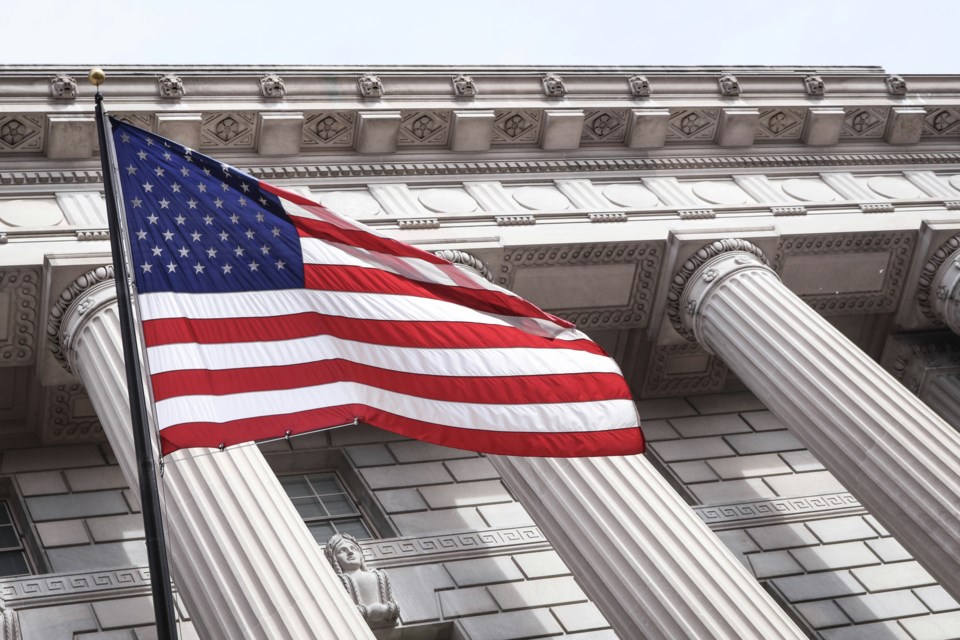We are used to political candidates describing any election that features them as “the most important in our lifetime.” This has definitely been the case in the United States.
At first, 2024 heralded a repeat of the elections of 1952 and 1956, which featured the same presidential contenders for both Republicans and Democrats. Now, after a less than stellar pre-convention debate by U.S. President Joe Biden, we will have, for the second time, a woman heading the Democratic ticket and facing Donald Trump as the Republican nominee.
This will be the fourth United States presidential election where I am able to ask Americans about their choices. A look at what transpired in the past three contests allows for a deeper explanation of what could happen this week in the United States—and the extreme importance of two groups of voters in the final outcome: women and young adults.
In , my final poll had incumbent Barack Obama of the Democratic Party defeating challenger Mitt Romney of the Republican Party (51 per cent to 46 per cent). Once all the votes were tallied, Obama received 52 per cent of the vote to Romney’s 47 per cent. The survey gave Obama a six-point lead among women (52 per cent to 46 per cent). Only 32 per cent of decided voters aged 18-34 told us they were backing Romney.
In , my final poll placed Democrat Hillary Clinton with a four-point lead over Republican Trump (49 per cent to 45 per cent). The nationwide popular vote was tallied at 48 per cent for Clinton and 46 per cent for Trump, who became president after carrying crucial states in the Electoral College. In spite of the presence of a woman at the top of the ticket, enthusiasm for Clinton was not overwhelming. She had the upper hand over Trump among female voters (54 per cent to 40 per cent, with six per cent backing minor candidates). Support for the Republican nominee among decided voters aged 18-34 rose to 35 per cent.
In , Democratic nominee Biden was favoured to win the popular vote against incumbent Trump in my final poll (53 per cent to 44 per cent).
While the election yielded a smaller advantage for Biden (51 per cent to 47 per cent), the level of support from women was higher for Biden than it was for Obama in 2012 and for Clinton in 2016 (59 per cent, with Trump a distant second at 39 per cent). Still, in an election heavily marked by the Trump Administration’s handling of the COVID-19 pandemic, 42 per cent of decided voters aged 18-34 selected the Republican nominee.
In , our nationwide poll showed the Democratic nominee, U.S. Vice-President Kamala Harris, leading Trump among both all decided voters (52 per cent to 47 per cent) and female decided voters (57 per cent to 42 per cent). Trump had a two-point edge over Harris among decided voters aged 18-34 (50 per cent to 48 per cent).
On the eve of the election, the nationwide race . Harris is in a statistical tie with Trump (50 per cent to 48 per cent). The Democratic nominee has a 14-point lead among female decided voters (56 per cent to 42 per cent) and the race is tied among decided voters aged 18-34 (49 per cent for each contender).
Put differently, the proportion of American women who will vote for the Democratic nominee—or have already done so—is slightly lower than it was for Biden in 2020, but higher than it was for Obama in 2012 and for Clinton in 2016.
This “good news story” for Democratic supporters is countered by the significant movement among decided voters aged 18-34. Just 12 years ago, fewer than a third of young adults were voting Republican. The proportion has risen by 17 points.
Of course, the Electoral College will decide who will become the 47th President of the United States. The “Blue Wall” that fell unexpectedly in 2016 returned to the Democrats under Biden. Our latest surveys continue to show an in Michigan, Pennsylvania and Wisconsin, with Harris edging ahead on account of massive support from women (65 per cent in Michigan, 63 per cent in Wisconsin and 61 per cent in Pennsylvania).
For decades, women and young adults provided the core of support for Democratic presidential candidates. One group is still behind Harris and the other is nowhere near the level of intensity that was observed in the second Obama victory. Elections are won and lost on emotional connection.
It has been easier for the Democrats to connect with women on the basis of what a Trump presidency would mean on equality and contraception, than to throw statistics at young Americans who cannot see how a buoyant stock market or a low unemployment rate will help them afford a home of their own.
When we last checked on Canada’s federal political scene , 35 per cent of decided voters aged 18-34 were supporting the Conservative Party. The message from Pierre Poilievre, untested as a head of government, is resonating with young adults. We will find out in a matter of days if young Americans in battleground states are enough to propel a shift to the right, but under a man who has already lived inside the White House.
Mario Canseco is president of Research Co.
Results are based on an online survey conducted on Nov. 2 and Nov. 3, 2024, among 1,003 likely voters in the United States and 962 decided voters in the 2024 presidential election. The data has been statistically weighted according to U.S. census figures for age, gender and region. The margin of error—which measures sample variability—is +/- 3.1 percentage points for likely voters and +/- 3.2 percentage points for decided voters, 19 times out of 20.




